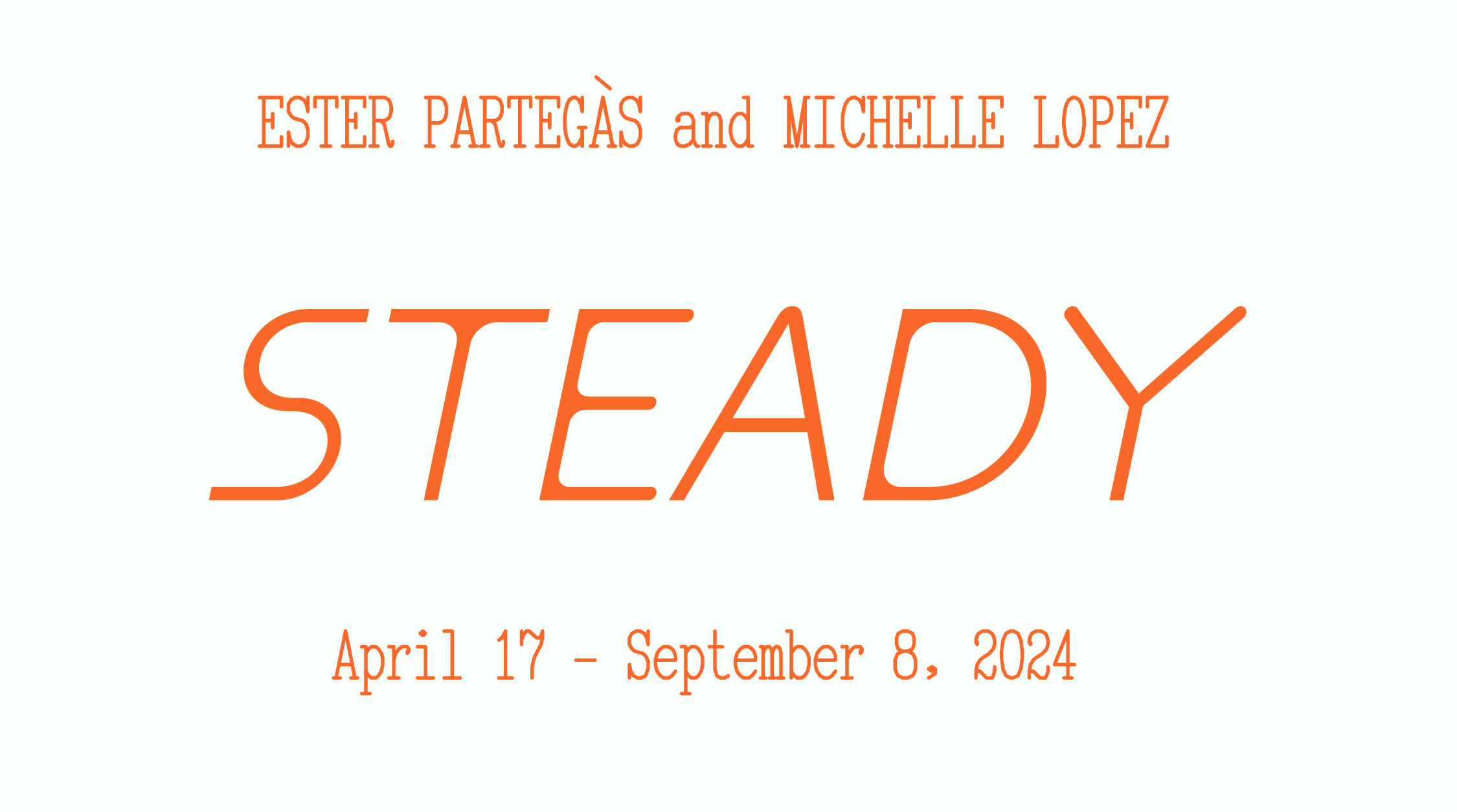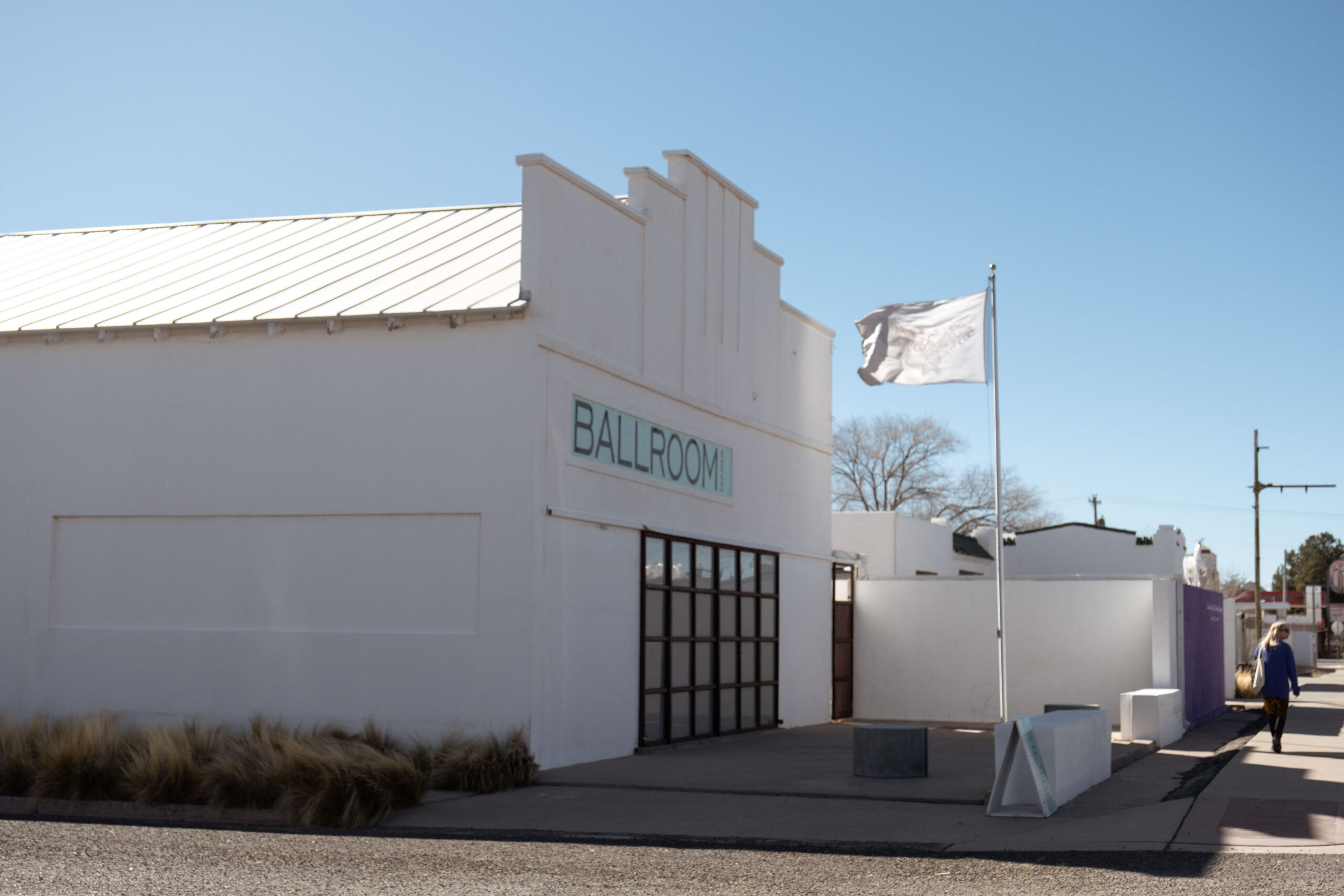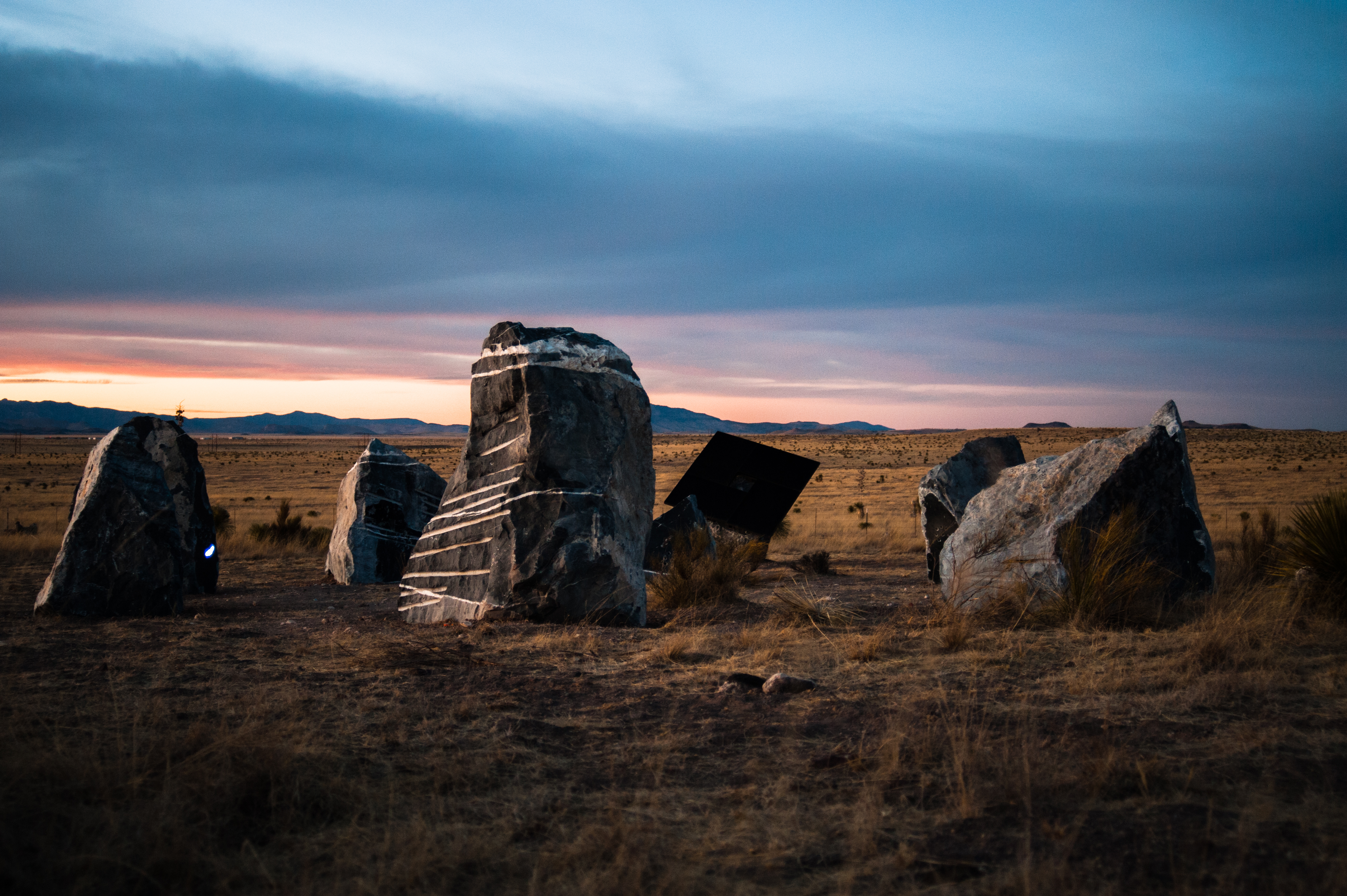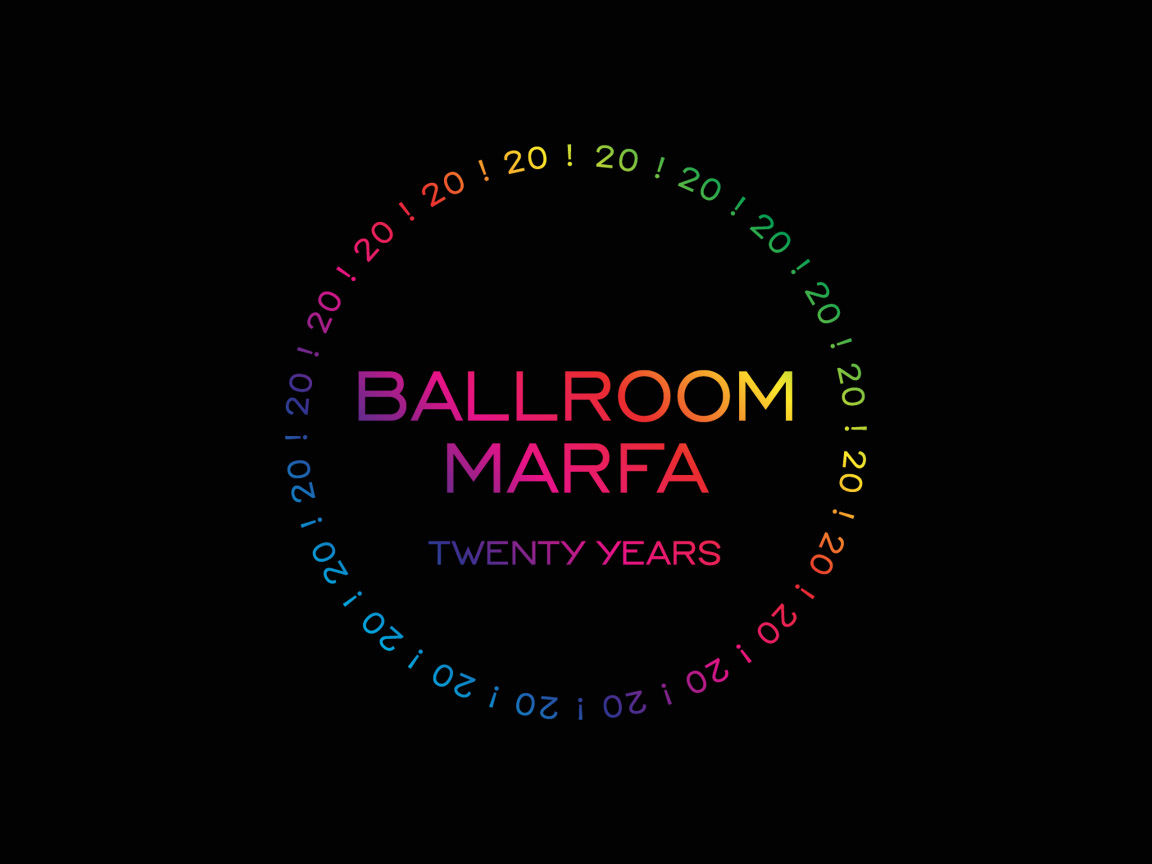
Brigid McCaffrey
Paradise Springs, 2013
Digital video still
33 minutes
Cine Internacional de Artistas – Brigid McCaffrey
Comisariado por Laura Copelin
sábado, 14 de noviembre
10:00 – 18:00 Proyecciones de selecciones internacionales de AFI
19:00 Proyección destacada de cortometrajes por Brigid McCaffrey
Crowley Theater
Marfa, Texas
domingo, 15 de noviembre
13:00 – 15:00 Camino y conversación de geología
Chihuahuan Desert Research Institute
Fort Davis, Texas
Organizado conjuntamente con Whitechapel Gallery, Londres, a Ballroom Marfa le complace presentar la temporada 2015 de Artists’ Film International, un programa que muestra artistas internacionales que trabajan en cine y animación. Este año Ballroom Marfa destacará las obras de la cineasta Brigid McCaffrey, basada en la ciudad de Los Angeles.
Las películas recientes se establecen en paisajes que transmiten precariedad y flujo. Su forma de realizar documentales se enfoca en ambientes y gente en transición, y ella mantiene en mente a estos sujetos por largos periodos de tiempo. Estas obras meditan en la tension entre individualismo y comunidad en el medio de realidades instables económicamente y ecológicamente. Formado por el proceso de retrato, las películas responden a los cambios fiscales y emocionales de sus personajes, creando documentos que fusionan representaciones del mismo y del lugar.
Ballroom Marfa tendrá una proyección gratuita de una selección de la obra de McCaffrey, que incluye su película de 2013 Paradise Springs, la cual se sigue a Ren Lallatin, un geólogo que estudia el Desierto de Mojave. Lallatin traza sus actualidades volcánicas y sísmicas; localiza fuentes de agua y reliquias de habitantes anteriores; y identifica características de paisajes que ocultará su refugio a vista del publico. La película consiste en una sucesión de soliloquios errantes y cruces de terreno. El geólogo deambula mientras describe sus interacciones con el mundo natural, y declara su rechazo de regulación de tierra y privatización.
Las películas de McCaffrey serán proyectadas al lado de selecciones de otras instituciones internacionales del 2015 AFI en el Crowley Theater en Marfa. Las proyecciones serán presentadas de formato loop todo el día. La cita es el sábado, 14 de noviembre, 2015. Una conversación con McCaffrey y Lallatin seguirá en la tarde.
Entre las actividades también incluirá una conversación y caminata de geología al aire libre dirigida por Lallatin y Jesse Kelsche, una conferencista de geología de la Universidad de Sul Ross. La caminata/lectura tomará lugar en el instituto sin fines de lucro, The Cihuanhuhan Desert Research Institute. La cita es el domingo, 15 de noviembre, 2015. Todos los eventos son gratuitos y abiertos al publico.
Las proyecciones de películas como parte del evento del sábado de AFI incluye las selecciones de las siguientes instituciones:
Belgrade Cultural Centre, Serbia
Centre for Contemporary Arts Afghanistan (CCAA), Kabul
Cinematheque de Tanger, Tángier
City Gallery, Kfar Saba
Fundación PRÓA, Buenos Aires
GAMeC, Bergamo Italia
Hanoi DOCLAB, Hanoi
Istanbul Modern, Estanbul
Museum of Modern Art in Warsaw, Varsovia
National Centre for Contemporary Arts (NCCA), Moscú
Neuer Berliner Kunstverein, Berlín
Para/Site, Hong Kong
Project 88, Mumbai
Tromsø Kunstforening, Tromsø
Whitechapel Gallery, Londres
Brigid McCaffrey (n. 1978) es una cineasta experimental y documental quien recide en la ciudad de Los Angeles. Ella trabaja en cine y video. Sus películas han estado en varios cines incluyendo BAFICI, Bradford Internacional Film Festival, Cinema de Reel, DocLisboa, L’Alternativa, el Rotterdam International Film Festival, Torino International Film Festival, Other Cinema in San Francisco, y el Los Angeles Filmforum. Su película Castaic Lake estuvo galardonada como la mejor cinematografia en el Ann Arbor Film Festival en el 2011. Paradise Springs recibió el Marian McMahon Award en Images Festival en el 2014. Ella recibió una maestría en Cine y Video de CalArts y una licenciatura en Fotografia y Cine de Bard College.
Rhyannon (Ren) Lallatin es un lama budista de ascendencia celta y indigna norteamericano. Como profesor, Ren ofreció cursos de pregraduado y postgraduado en geología/geofísica, ecopsicología y los estudios indignas norteamericanos, y todo ello entretejido en su conjunto educativo. Un jardinero ávido del Desierto de Mojave, diseñador de los ecosistemas y herbolario, Ren prospera de la relación recíproca inteligente con el consciente, la tierra viva, y el universo. Ser transgénero, Ren utiliza esa palabra en el sentido de ser trascendente de género. Esto indica la plenitud original no limitada por los dictados de la cultura o la personificación actual.
Jesse Kelsch ha estudiado y trabajado como geóloga en su lugar favorito, al suroeste de los Estados Unidos, desde 1993. Ella tiene una licenciatura en Geociencias de la Universidad de Arizona y una maestría en la Tierra y Ciencias Planetarias de la Universidad de Nuevo México. Ella trabajó como hidrogeólogo en Nuevo México y el oeste de Texas hasta que se mudó a Alpine, Texas en 2006. Ella ahora enseña geología en la Universidad de Sul Ross. Su objetivo en la enseñanza es conseguir que sus estudiantes dejen el salón de clases y salgan al campo tanto como sea posible, para fomentar la investigación entre los estudiantes universitarios, y fomentar la investigación científica a todos aquellos que lo deseen.
























